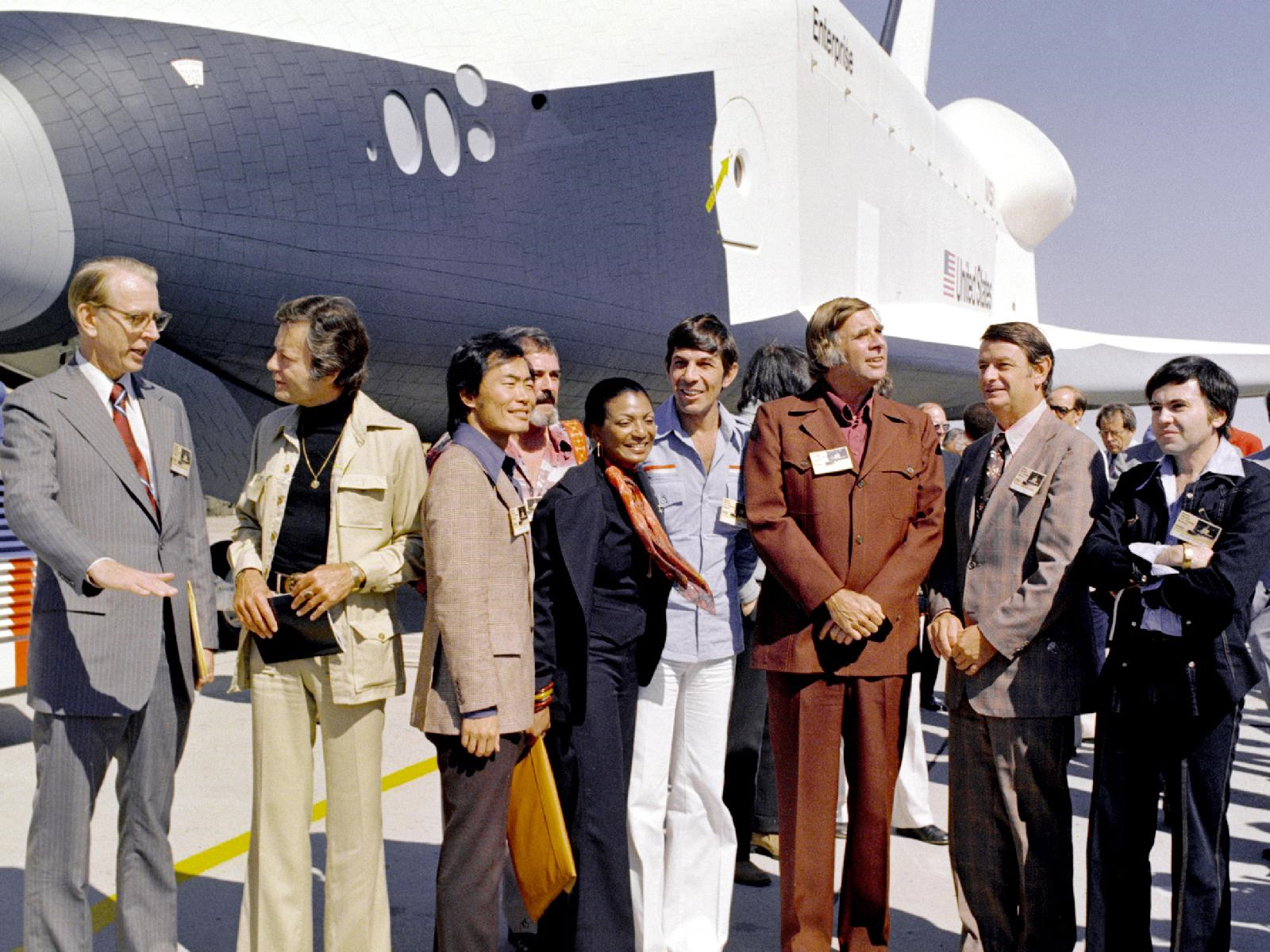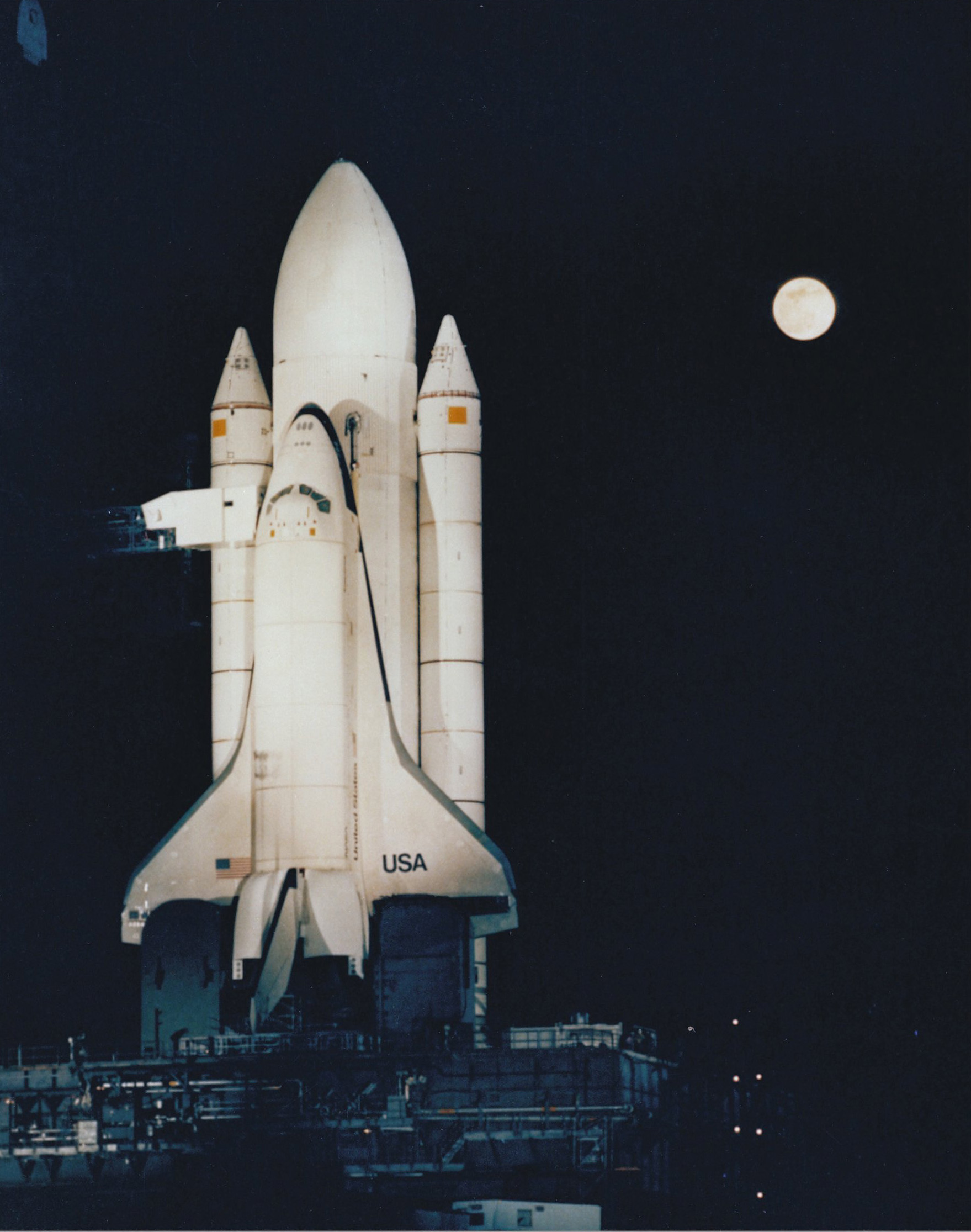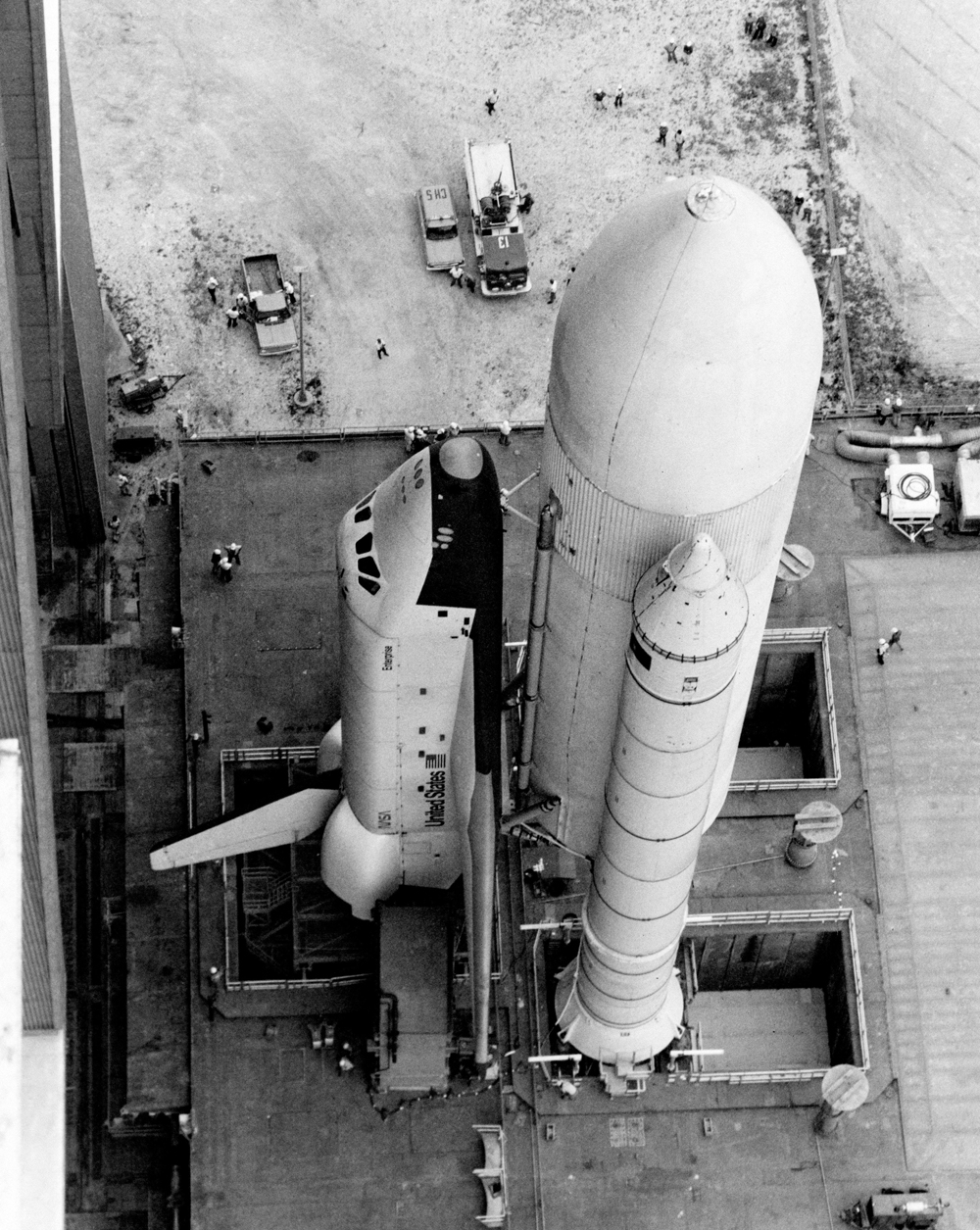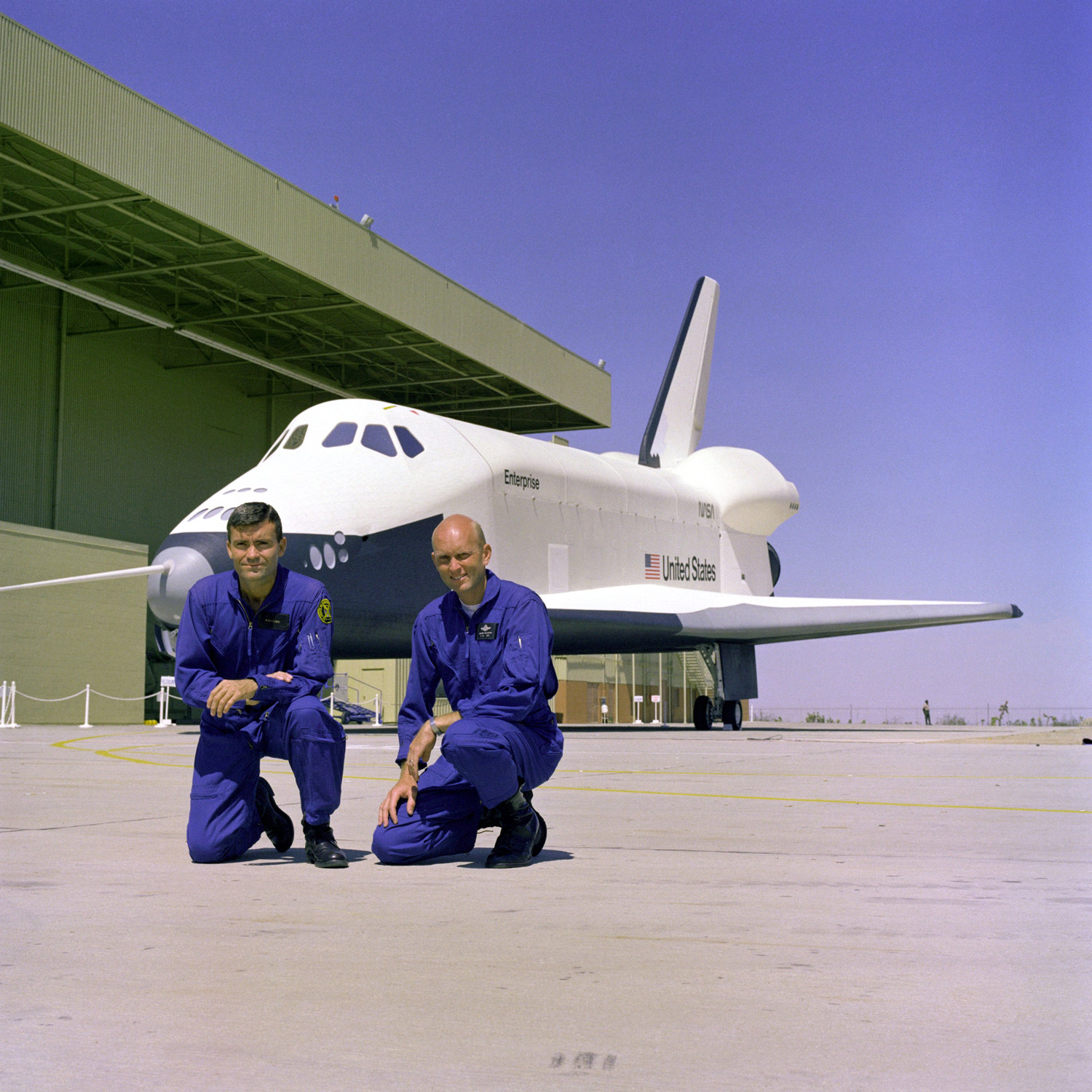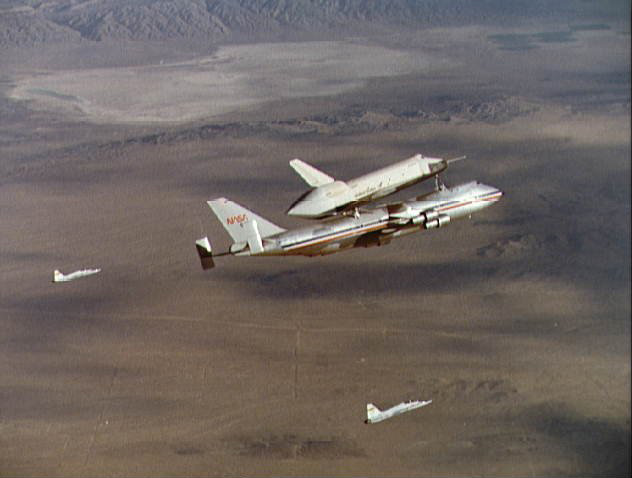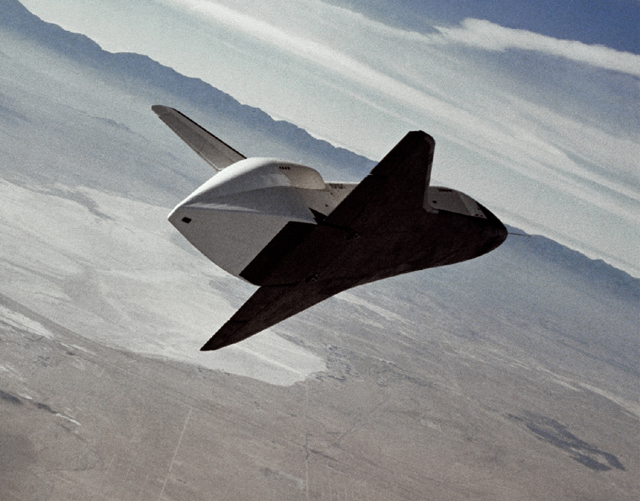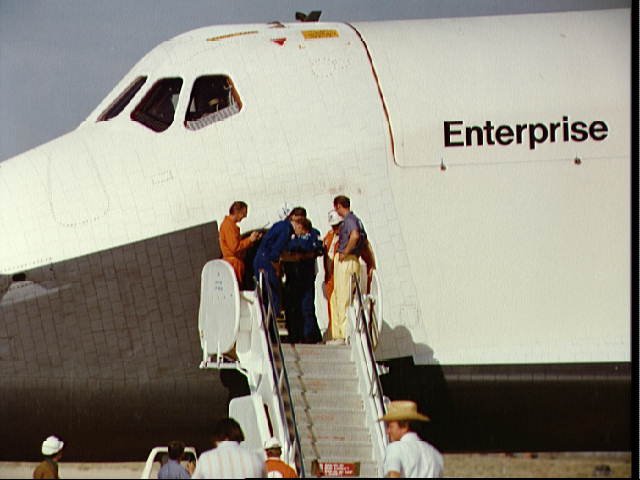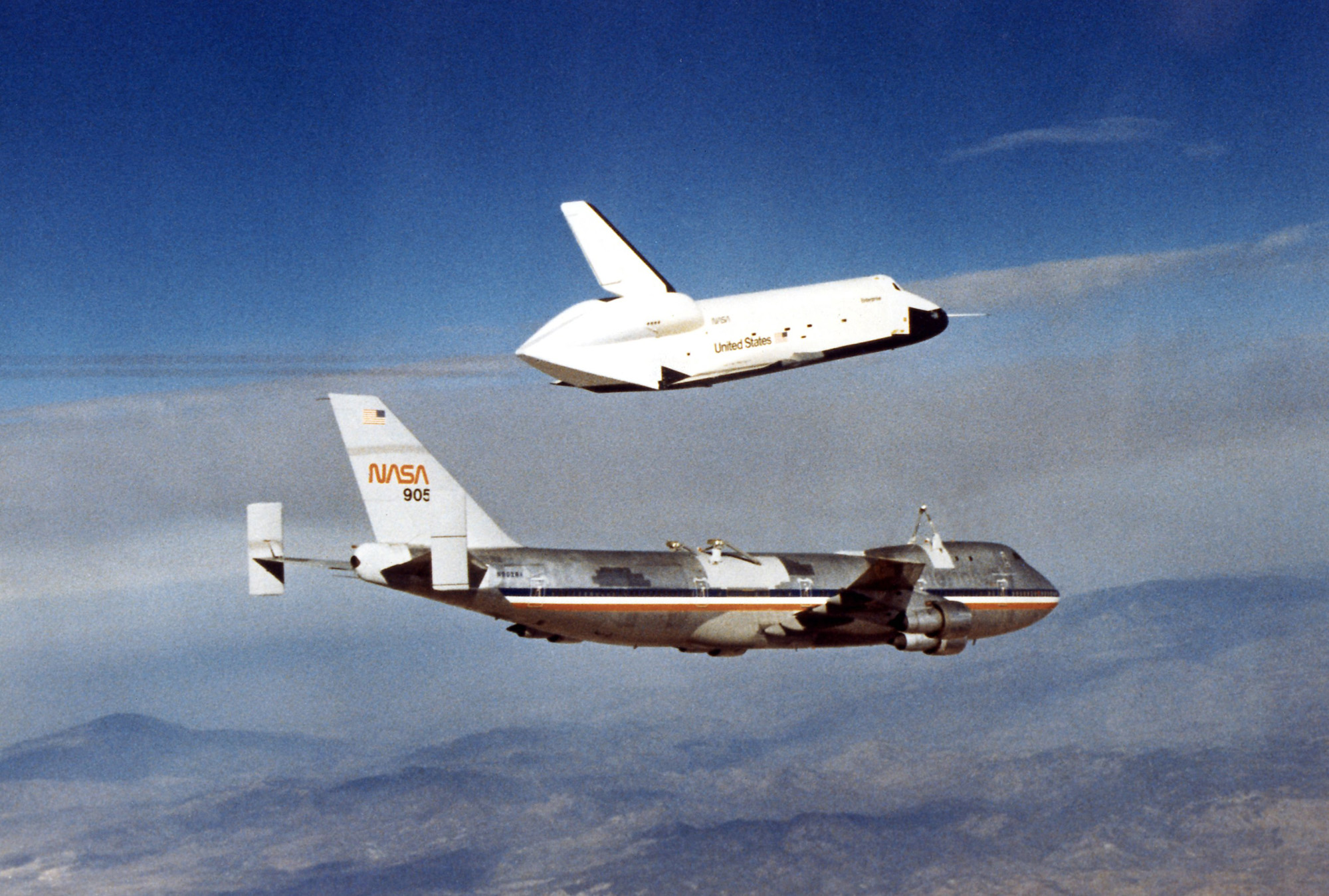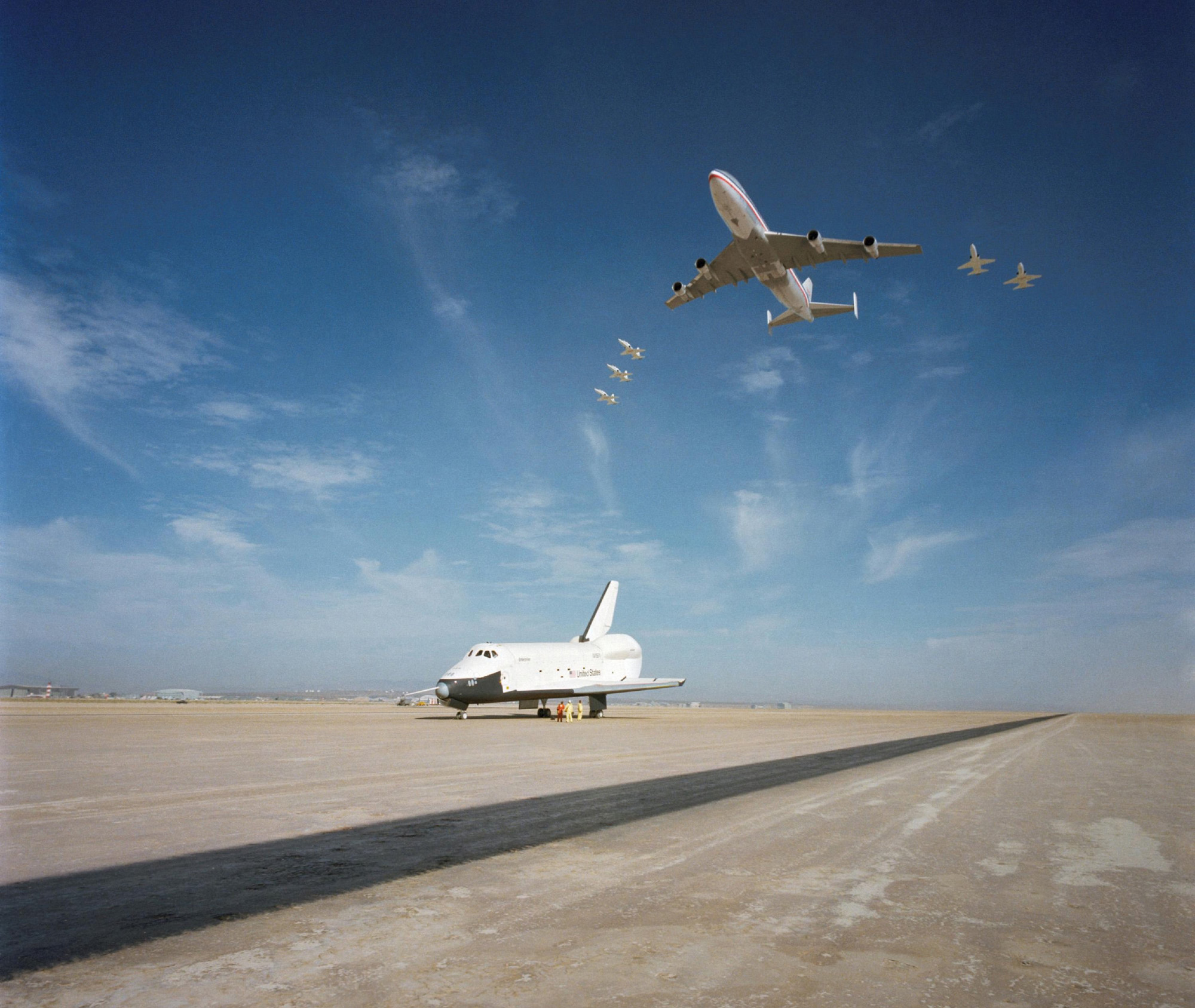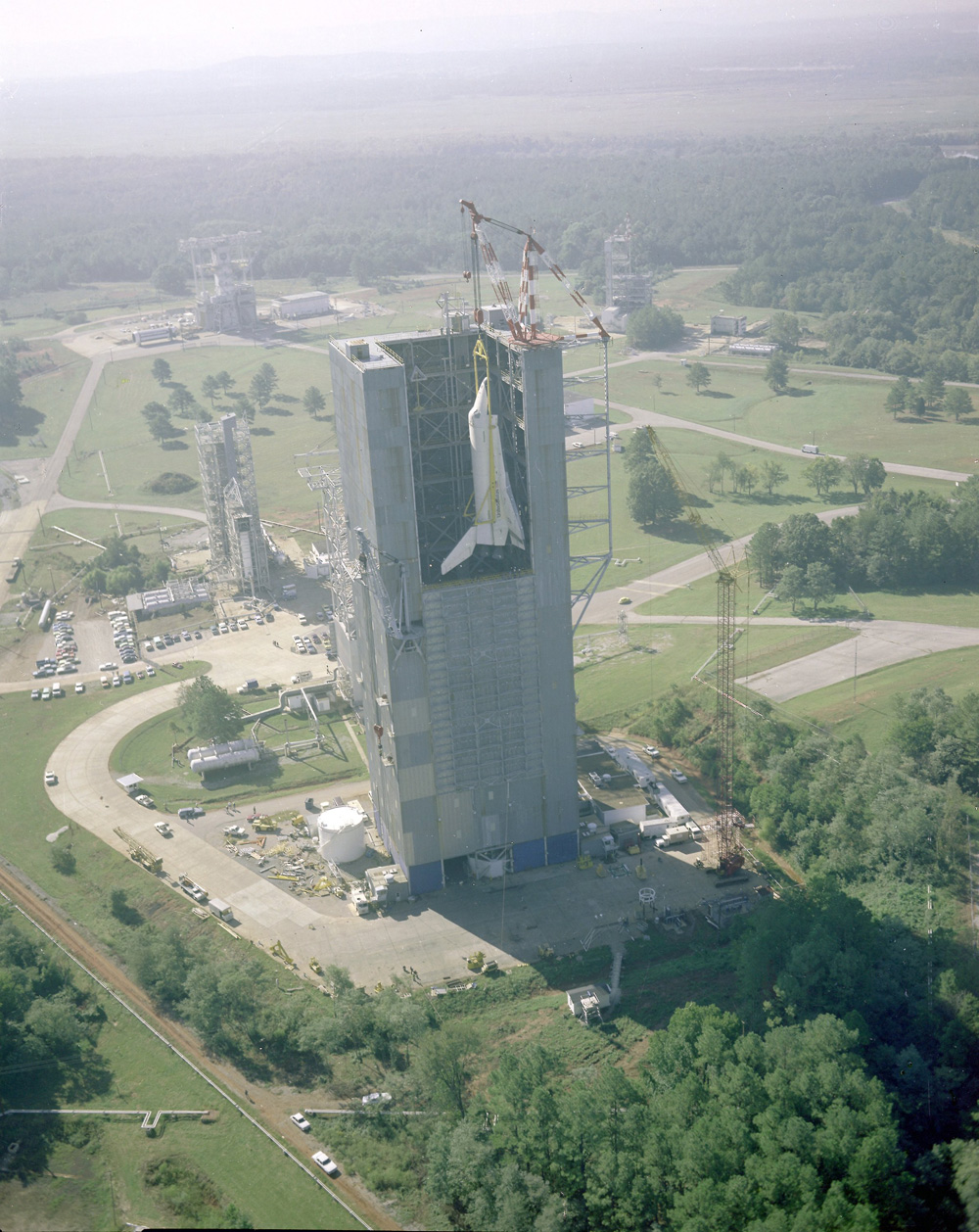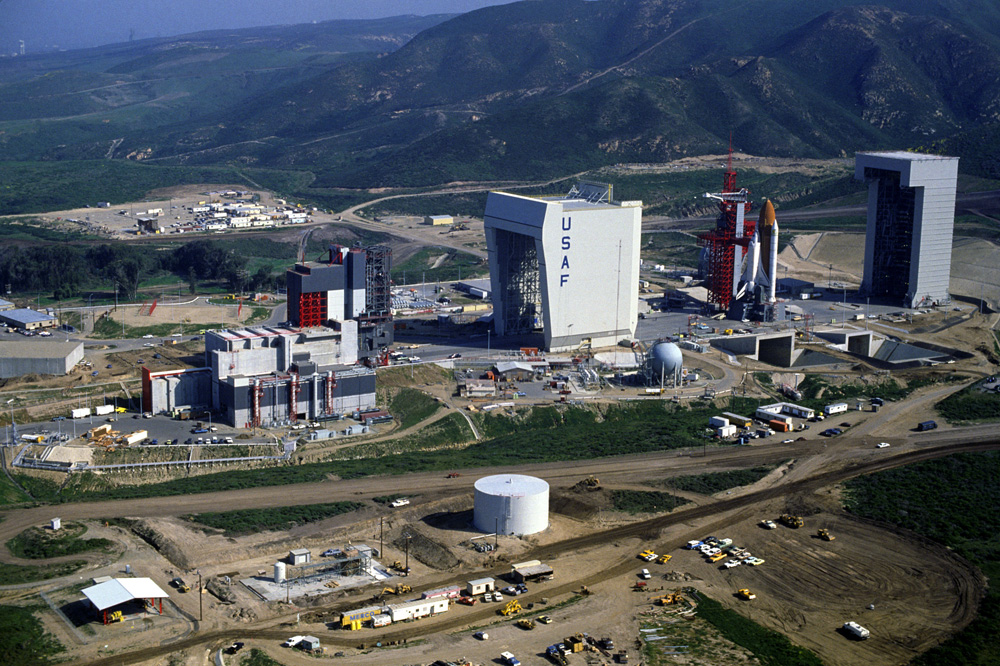Photos: A Space Shuttle Called 'Enterprise'
Crew of the Enterprise?
In 1976, NASA's space shuttle Enterprise rolled out of the Palmdale manufacturing facilities and was greeted by NASA officials and cast members from the 'Star Trek' television series. From left to right they are: NASA Administrator Dr. James D. Fletcher; DeForest Kelley, who portrayed Dr. "Bones" McCoy on the series; George Takei (Mr. Sulu); James Doohan (Chief Engineer Montgomery "Scotty" Scott); Nichelle Nichols (Lt. Uhura); Leonard Nimoy (Mr. Spock); series creator Gene Roddenberry; an unnamed NASA official; and, Walter Koenig (Ensign Pavel Chekov).
Enterprise and the Moon
NASA's space shuttle Enterprise stands atop the Kennedy Space Center's Launch Pad 39A highlighted against the darkened Florida sky and a bright moon during testing of the high-intensity lighting system on June 2, 1980. The xenon lights would be used in launch preparations.
Enterprise's First Appearance
The test shuttle Enterprise made its first appearance mated to supportive propellant containers and boosters as it was rolled from the Vehicle Assembly Building at Kennedy Space Center en route to the launch pad, some 3.5 miles away, on May 1, 1979. Enterprise underwent several weeks of fit and function checks on the pad in preparation for STS-1, on which its sister craft Columbia took astronauts John Young and Robert Crippen into space for a 54-hour test mission.
Space Shuttle Enterprise: The Test Pilots
The first crew members for the Space Shuttle Approach and Landing Tests (ALT) are photographed at the Rockwell International Space Division's Orbiter Assembly Facility at Palmdale, California. The Shuttle Enterprise, named after the starship in the "Star Trek" TV show of the 1960s, is commanded by former Apollo 13 Lunar Module pilot, Fred Haise (left) with C. Gordon Fullerton as pilot.
Shuttle Enterprise, a Formation Flyer
The Orbiter 101 "Enterprise" rides "piggy-back" atop the NASA 747 carrier aircraft during the second free flight of the Shuttle Apporach and Landing Tests (ALTs) conducted on September 13, 1977 at Dryden Flight Research Center in Southern California. One chase plane can be seen in the left background, another appearing to be directly under the Boeing 747.
Enterprise Flies Free
The space shuttle prototype Enterprise flies free after being released from NASA's 747 Shuttle Carrier Aircraft over Rogers Dry Lakebed during the second of five free flights carried out at the Dryden Flight Research Center, in Edwards, Calif., as part of the shuttle program's Approach and Landing Tests (ALT). The tests were conducted to verify aerodynamics and handling characteristics in preparation for orbital flights with the Space Shuttle Columbia, which began in April 1981.
Space Shuttle Enterprise Touchdown
Astronauts Joe H. Engle (looking down), commander, and Richard H. Truly (face partially obscured by Engle), pilot, are greeted by Rockwell technicians following egress from the Space Shuttle Orbiter 101 "Enterprise." They had just completed a five minute, 31-second unpowered free flight in the "Enterprise," the second of a series of such flights, conducted on September 13, 1977, at Dryden Flight Research Center (DFRC) and Edwards Air Force Base in California.
Breaking space news, the latest updates on rocket launches, skywatching events and more!
Space Shuttle Enterprise in Flight
The Space Shuttle prototype Enterprise flies free of NASA's 747 Shuttle Carrier Aircraft (SCA) during one of five free flights carried out at the Dryden Flight Research Facility, Edwards, California in 1977 as part of the Shuttle program's Approach and Landing Tests (ALT).
Space Shuttle Enterprise Has Landed
This scene was photographed when the NASA 747 carrier aircraft and five T-38 aircraft flew over the Shuttle Orbiter 101 "Enterprise" while it was parked on the runway at Edwards Air Force Base in Southern California. The Orbiter 101 had just completed a five-minute, 28-second unpowered mission during the second free flight of the Shuttle Approach and Landing Tests (ALT) conducted September 13, 1977 at the Dryden Flight Research Center.
Shuttle Enterprise Gets a Lift
An aerial view of NASA's orbiter Enterprise being hoisted into the Marshall Space Flight Center's Dynamic Test Stand for the Mated Vertical Ground Vibration test on Oct. 4, 1978. The test marked the first time ever that the entire Space Shuttle elements, an Orbiter, an External Tank (ET), and two Solid Rocket Boosters (SRB), were mated together. The purpose of the vibration tests was to verify that the Space Shuttle performed its launch configuration as predicted.
Enterprise Shuttle's California Pad
An overall view of Space Launch Complex Six. The space shuttle Enterprise, mated to an external tank and solid rocket boosters, is resting on the launch mount in a 1985 test.

Tariq is the award-winning Editor-in-Chief of Space.com and joined the team in 2001. He covers human spaceflight, as well as skywatching and entertainment. He became Space.com's Editor-in-Chief in 2019. Before joining Space.com, Tariq was a staff reporter for The Los Angeles Times covering education and city beats in La Habra, Fullerton and Huntington Beach. He's a recipient of the 2022 Harry Kolcum Award for excellence in space reporting and the 2025 Space Pioneer Award from the National Space Society. He is an Eagle Scout and Space Camp alum with journalism degrees from the USC and NYU. You can find Tariq at Space.com and as the co-host to the This Week In Space podcast on the TWiT network. To see his latest project, you can follow Tariq on Twitter @tariqjmalik.
